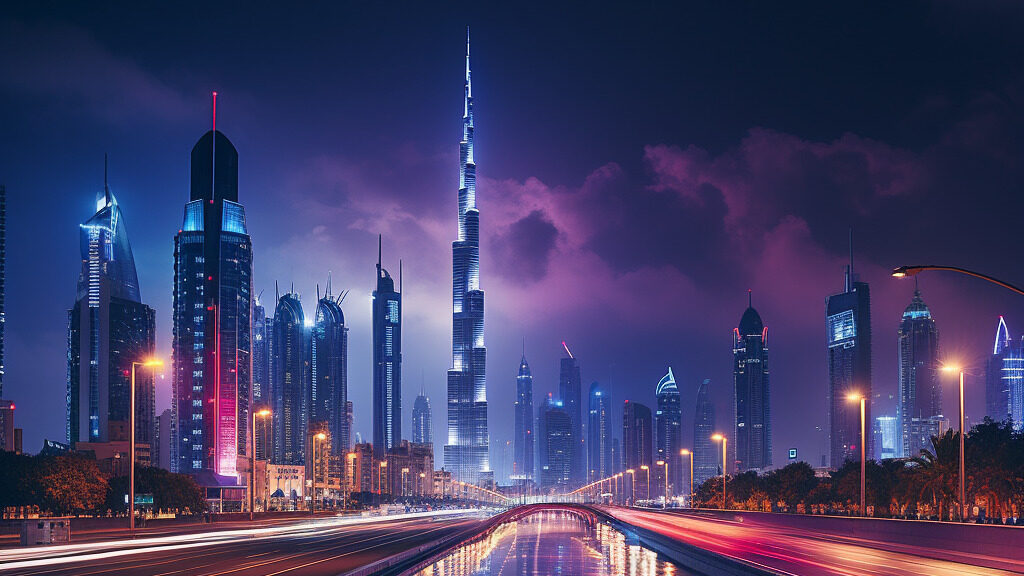Dubai, known as the city of superlatives, is renowned for its towering skyscrapers that pierce the sky. These architectural marvels have not only reshaped the city’s skyline but have also posed a fundamental question in the world of architecture: Glass or Metal? This article will explore the intricate details of these dominant building materials shop and the factors influencing their usage in Dubai’s iconic skyscrapers.
The skyline of Dubai is a tribute to human creativity and the persistent quest to push the limits of architectural design. Choosing between glass and metal as dominant building materials profoundly impacts these towering structures’ aesthetics, sustainability, and functionality.
The Aesthetics: Glass Elegance vs. Metal Majesty
Glass: Transparency and Modernity
One of the defining features of Dubai’s glass-clad skyscrapers is their transparency. Glass allows for panoramic views of the city and the surrounding landscape, creating a sense of openness and modernity. The Burj Khalifa, the world’s tallest skyscraper, is a prime example of glass’s aesthetic appeal. You must try the door locks Dubai.
Metal: Strength and Boldness
On the other hand, metal-clad skyscrapers exude strength and boldness. The gleaming facades of metal skyscrapers like the Emirates Towers and the Rose Rayhaan by Rotana add a sense of grandeur to Dubai’s skyline. Metal provides a unique and powerful visual impact.
Sustainability: The Green Factor
Glass: Energy Efficiency
Advanced glass technologies in Dubai’s skyscrapers contribute to energy efficiency. Low heat transmission from high-performance glass eliminates the need for extensive air conditioning. This supports Dubai’s dedication to sustainability.
Metal: Durability and Longevity
Metal, particularly aluminum and steel, is renowned for its durability and longevity. Metal-clad buildings require less maintenance and are built to withstand the harsh desert climate of Dubai. This longevity makes them a sustainable choice in the long run.
Functionality: The Inside Story
Glass: Natural Light and Views
Glass promotes natural light penetration, creating well-lit interiors that enhance the well-being of occupants. Additionally, the expansive views offered by glass exteriors are highly sought after in luxury apartments and offices.
Metal: Structural Integrity
Metal is prized for its structural strength. It allows for larger column-free spaces, making it ideal for commercial spaces where flexibility and adaptability are essential. Metal-clad skyscrapers often house thriving businesses.
In Short, In the dynamic world of architecture, choosing between glass and metal as dominant building materials is not simple. It hinges on factors such as aesthetics, sustainability, and functionality. Whether adorned in glass or metal, Dubai’s skyscrapers are remarkable human engineering and design achievements.
FAQs:
Which is More Common in Dubai, Glass or Metal Skyscrapers?
The choice varies, but glass and metal skyscrapers exist throughout Dubai’s skyline.
Do Glass Skyscrapers in Dubai Face Overheating Issues?
Many glass-clad skyscrapers in Dubai use advanced technologies to mitigate overheating, making them energy-efficient.
Are Metal Skyscrapers More Environmentally Friendly in the Long Term?
Due to their durability and low maintenance requirements, metal skyscrapers can be considered more environmentally friendly in the long run.
Can You Provide Examples Of Iconic Glass and Metal Skyscrapers in Dubai?
Iconic glass skyscrapers include the Burj Khalifa, while metal-clad towers like the Emirates Towers are prominent in Dubai’s skyline.
Are There Any Upcoming Developments in Dubai’s Skyscraper Architecture?
Dubai is continually evolving, and new developments often incorporate cutting-edge materials and designs to further push the boundaries of architecture.
Read more about: The Crucial Role of an Appellate Attorney




